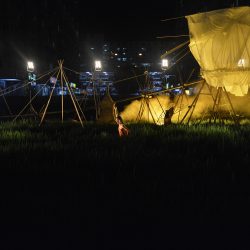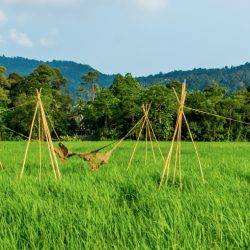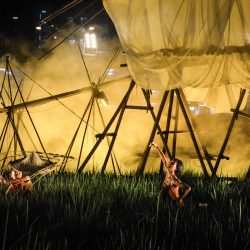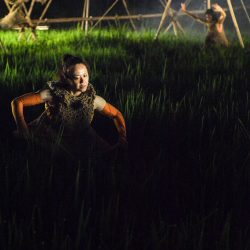A GROUP OF MALAYSIAN ARTISTS HAS BROUGHT A RICE PADDY INTO AN URBAN AREA IN PENANG, HOPING PEOPLE MIGHT HAVE A CHANCE TO LEARN MORE ABOUT WHAT’S ON THEIR DINING TABLES EVERY DAY.
Lisa Foo, Malaysian architect and artist, says that art offers her more opportunities to work with public spaces. Such issue she has brought up seems to coincide well with the kind of public space that is open for everyone’s access, unlike a gallery whose audience is way more specific. Between 2008 and 2012, Foo explored and raised the issue of ocean pollution with one of her installations made of plastic bottles salvaged from the sea, informing the audience through her artwork about the amount of plastic bottles left in the ocean and how we are all a part of the problem. This year, at George Town Festival, an art festival held annually in the famous city of Penang Island, Foo continues her mission with the public space and, once again, chose to speak about something we can all relate to. For this project, she collaborated with performance artists, Aida Redza, musician/song writer from Toccata Studio Ng Chor Guan, artist, Siti Sarah Ameera and a performance artist/choreographer from Japan, Mao Arata under the project named Moved by Padi.

Moved by Padi, Photo © Phin Oswald
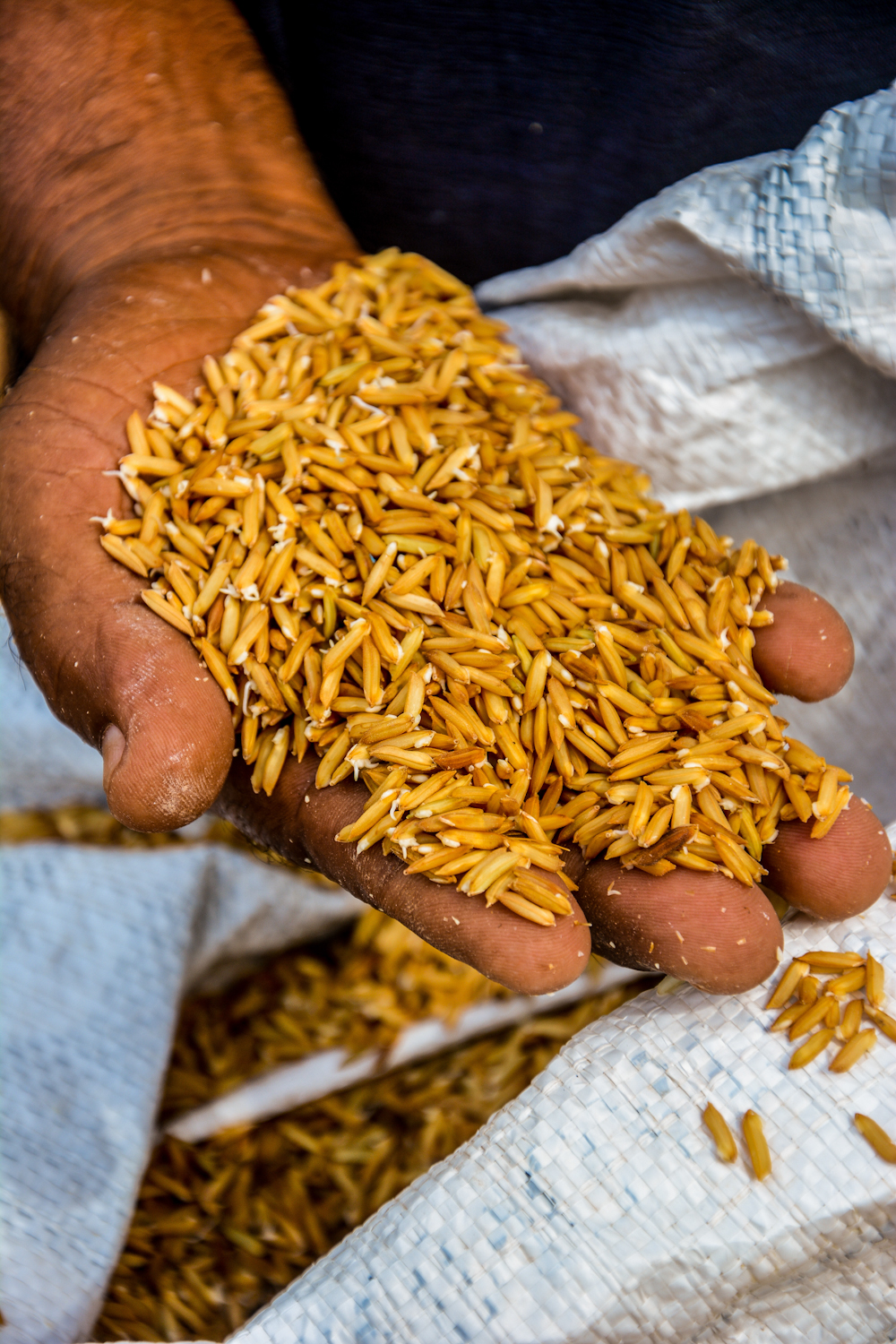
Moved by Padi, Photo © Phin Oswald
The project’s primary interest is in ‘rice’ (in Malay, Padi means rice field), one of the country’s main food sources that finds its way onto almost every dining table of Malaysian people no matter what the meal, and is a staple of the region’s common agricultural culture. Foo, as the representative of Moved by Padi, said that “Most of us don’t know where rice really comes from, we only know that it comes from a field but we still don’t really know what it looks like. What surprises us the most is the size of the field and how such a vast land is looked after by only very few people.” In 2015, Foo and Redza, who collaborated on many previous projects as well, went out to Balik Pulau (the area west of Penang) and held a short workshop where they studied the farmers’ way of life. The workshop then led to the making of a site-specific performance and a documentary. While bringing a large number of people to the actual field seemed too much of a hassle, Foo and Redza transformed the two-block space on Macallum Street surrounded by residential buildings into a temporary rice field, bringing the urban people a firsthand encounter with the backstory and people behind the production of the food they eat on a daily basis. The work also brings back memories of the area that was once an agricultural land (Carnavon Street not far from Macallum Street). The project itself was initiated months before George Town Festival took place, as the land’s surface was prepped and the rice planted with the help of Pakcik Awang (the farmer they worked with in the previous workshop). The rice field and the installation act as the backdrop for Aida Redza and Mao Arata’s performance with the addition of sound and light visuals by Ng Chor Guan and Sarah Ameera, respectively. The production has Ombak-Ombak ArtStudio as the executive producer with the performance being held on the 27th and 28th of August (viewers are welcome to see the installation throughout the festival).
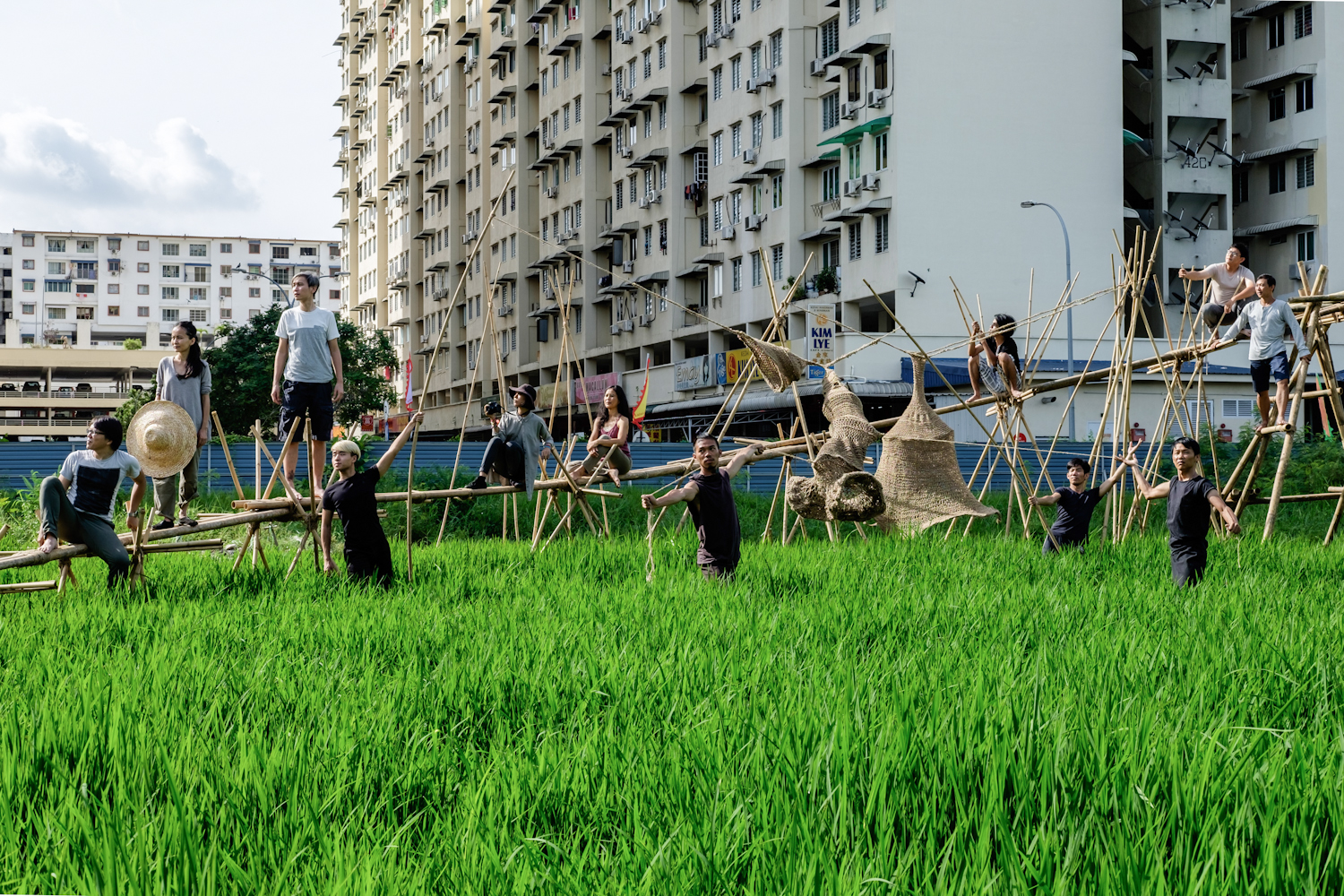
Moved by Padi, Photo © Joie Koo
A two-block rice field emerging in the middle of an urban neighborhood is quite a surreal spectacle. But what’s even more surreal is how the project reflects upon the wide gap between the producers (farmers) and consumers of rice in Malaysia, a country where rice is considered one of people’s everyday foods. Will the project cause people to realize such gap and how effective will it be in bringing back memories of the past? All remains to be seen. There is however one obvious thing about what this project portrays and that is the common dilemma of great divides and differences, an issue which every ASEAN country must find a way to handle and overcome.
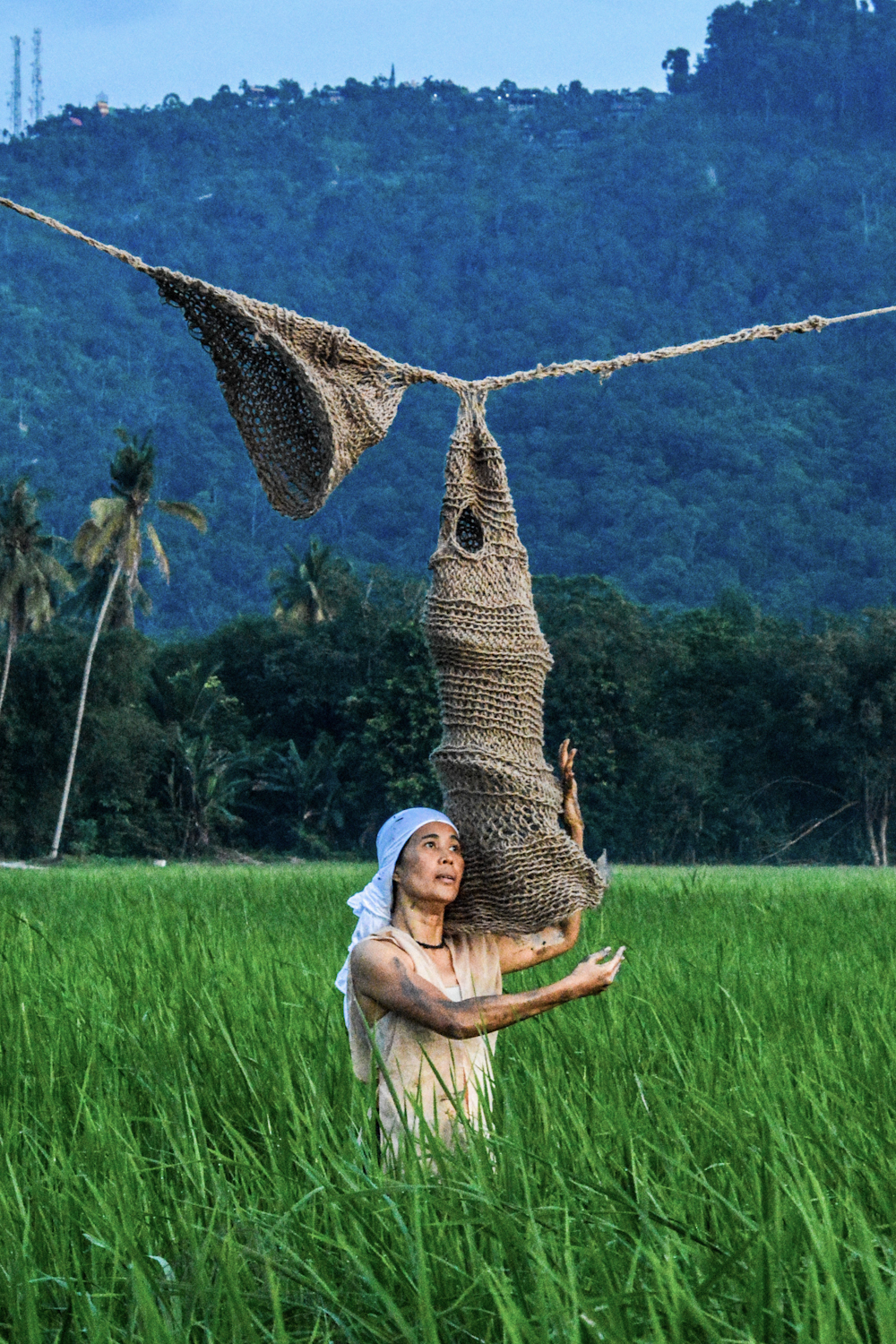
Moved by Padi, Photo © Phin Oswald
TEXT: NAPAT CHARTIBUTRA
www.georgetownfestival.com


